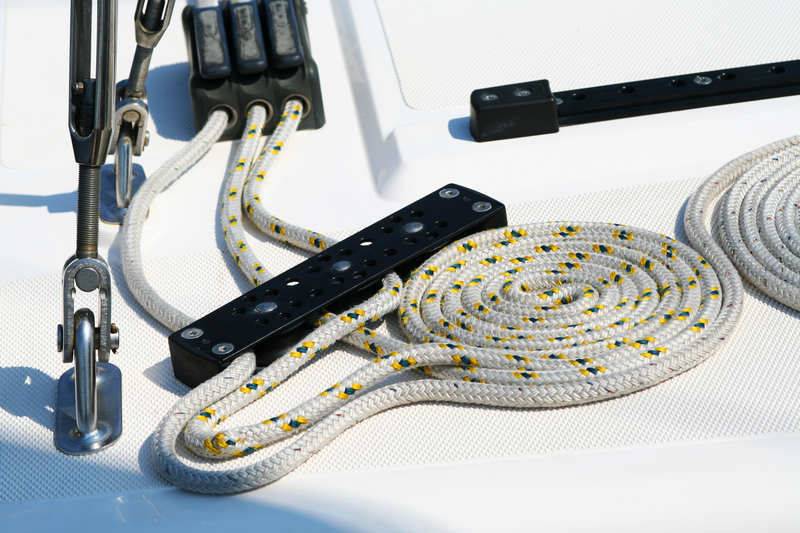Best Practices for Moving Your Bed and Mattress Efficiently
Posted on 10/06/2025
Best Practices for Moving Your Bed and Mattress Efficiently
Moving your bed and mattress to a new home is an essential step in any relocation process. Beds and mattresses are not only heavy and bulky, but they also require careful handling to avoid damage and keep them clean. Whether you're moving across town or across the country, following the best practices for transporting your sleeping setup can save you time, hassle, and money. This detailed guide is designed to provide comprehensive, actionable tips to move your bed and mattress efficiently.

Why Proper Bed and Mattress Moving Matters
Many people underestimate the complexity of moving bedroom furniture and mattresses. A poorly handled mattress can become dirty, damaged, or even ruined. Similarly, beds can sustain scratches, broken slats, or warped frames if not disassembled and moved with care. In addition, improper handling may lead to personal injury or unnecessary stress. Proper moving techniques ensure your bed and mattress arrive in pristine condition, maintaining your investment and ensuring a comfortable night's sleep in your new home.
Preparing to Move Your Bed and Mattress
1. Gather the Necessary Equipment
- Mattress bags or plastic covers - to protect your mattress from dust, dirt, and moisture.
- Furniture sliders or moving blankets - for both the bed frame and the mattress, preventing scrapes and scratches.
- Moving straps or ropes - to secure items during transport.
- Tool kit - with screwdrivers, Allen wrenches, and pliers for bed disassembly.
- Box or bags for hardware - to keep screws, nuts, bolts, and other small parts organized.
- Helpers - at least one other person, as beds and mattresses can be quite heavy and unwieldy.
2. Clean and Clear the Area
Before beginning, strip your bed of sheets, pillows, and blankets and wash them separately. Clear the surrounding area to create enough space for maneuvering the mattress and frame without knocking over other furniture or decorations. This step ensures a smooth and accident-free moving process.
3. Check the Bed Frame Type
Some frames are straightforward to disassemble, while others, such as platform beds or storage beds, may require additional care or special instructions. Refer to the manufacturer's guide, if available, for specific disassembly and reassembly instructions. Taking photos at each step can help you put everything back together correctly in your new home.
Step-by-Step Guide to Moving Your Bed and Mattress Efficiently
1. Remove Bedding and Accessories
- Take off all bedding - mattress pads, fitted sheets, comforters, and pillows.
- Launder or pack them separately in clean bags or boxes for easy unpacking in your new home.
- Remove decorative pillows, bed skirts, or furniture attached to the frame.
2. Disassemble the Bed Frame
Proper disassembly is a cornerstone of efficient bed and mattress relocation. Systematic disassembly protects the frame and speeds up reassembly.
- Start by removing any slats, support beams, or storage drawers.
- If your bed has a headboard or footboard, unscrew them from the main frame.
- Place all bolts, screws, and small pieces in clearly labeled plastic bags or containers. Tape the bag to a frame section or keep it in a designated moving supplies box.
- If your bed is particularly complex, photograph each step to assist with reassembly.
3. Prepare and Protect the Mattress
- Slip your mattress into a heavy-duty mattress bag or tightly wrap it in clean plastic, sealing the edges with strong packing tape.
- For added protection, especially during moves in rainy or snowy weather, double-wrap the mattress.
- For memory foam or hybrid mattresses, avoid bending or folding unless manufacturer guidelines specify it's safe. Bending can permanently damage the internal structure and void the warranty.
4. Move the Mattress
- Stand the mattress on its side; this is usually the easiest way to maneuver through doorways and stairs.
- Enlist at least one helper to guide the mattress through tight spots and prevent it from dragging on the floor.
- For long distances within a building or a larger property, a mattress dolly or cart can prevent strain and injury.
5. Transport the Mattress Safely
- If using a moving truck or van, load the mattress flat if possible, as standing it upright against a wall can cause it to sag over time.
- Avoid placing heavy items on top of the mattress to prevent compression damage.
- Secure the mattress using moving straps or ropes to minimize shifting during transit.
6. Move the Bed Frame
- Wrap all wooden or metal frame components in moving blankets or bubble wrap to protect surfaces from dings and scratches.
- Transport larger frame sections separately from the mattress, ideally in the moving truck or van's main compartment.
- Keep hardware bags labeled for quick reassembly at your destination.
7. Reassemble and Set Up
- Reassemble the frame in your new bedroom according to your photos or notes.
- Check all bolts and hardware for tightness and stability.
- Remove the mattress from its protective bag and allow it to air out before making the bed with fresh linens.
Additional Tips for Efficient Mattress and Bed Relocation
Protecting Your Mattress from Damage and Dirt
- Always use a dedicated mattress storage or transport bag for the best protection against stains and moisture.
- For moves in wet weather, place an extra tarp or sheet of plastic beneath the mattress during loading and unloading.
- Never store or transport mattresses on damp or dirty surfaces, as this can encourage mold and mildew growth.
Handling Bulky and Oversized Beds
- If you have a king-size bed or extra-thick memory foam mattress, measure all doorways and stairwells beforehand to ensure a smooth fit.
- If your bed or headboard is exceptionally large, coordinate with your moving team to remove doors from hinges for a few extra inches of clearance.
- Some specialized beds, like adjustable bases or smart beds, may require professional packing or handling. Consult your manufacturer's instructions for guidance.
DIY vs. Hiring Professional Movers
- If you're moving a simple bed and standard mattress, a DIY approach is usually sufficient with the right tools and helpers.
- For complex beds, valuable mattresses, or long-distance moves, consider hiring professionals who have experience transporting large furniture and bedding. Movers often supply custom mattress bags, heavy-duty straps, and can navigate tight spaces efficiently.
- Compare the cost and stress of DIY moving with the added convenience and peace of mind provided by reputable relocation specialists.
Tips for Safe Lifting and Moving
- Always use your legs, not your back, when lifting heavy bed frames or mattresses.
- Wear proper lifting gloves to prevent slipping and injuries.
- Take frequent breaks if moving large furniture, and communicate clearly with your helper to avoid accidents.
After the Move: Post-Move Mattress and Bed Care
Inspect and Clean Your Mattress
- Once in your new home, inspect your mattress carefully for any damage or soiling that may have occurred during the move.
- If needed, use a vacuum cleaner with a soft brush attachment to remove dust and debris from the mattress's surface.
- Allow the mattress to air out for at least a few hours before making your bed, especially if wrapped in plastic for an extended period.
Assemble Your Bed Frame Properly
- Refer to any photos, diagrams, or guides to ensure correct reassembly.
- Tighten all screws and bolts, but avoid over-tightening, which can strip hardware or damage the frame.
- Place protective pads under the legs if your new bedroom has hardwood or tile flooring to prevent scratches.
Dispose or Donate Old Mattresses Responsibly
- If your move is a good opportunity to upgrade your mattress, responsibly dispose of or donate your old one.
- Many cities offer mattress recycling options to keep them out of landfills.
- Charities may accept lightly used mattresses for donation, provided they are in good condition.

Common Mistakes to Avoid When Moving Beds and Mattresses
- Skipping the protective mattress bag (increases risk of dirt, mold, and damage).
- Improperly labeling hardware, making reassembly difficult and frustrating.
- Attempting to move a bed or mattress alone without adequate assistance.
- Placing heavy boxes or furniture atop the mattress during transport.
- Neglecting to measure doorways, hallways, and staircases prior to attempting to move large frames or mattresses.
Conclusion: Move Your Bed and Mattress the Right Way
With a little planning, the right equipment, and attention to detail, moving your bed and mattress can be a painless part of your relocation. From proper disassembly of your bed frame to careful wrapping and lifting of your mattress, these best practices ensure your bedroom is ready for restful sleep in your new home. Remember to pack methodically, transport items securely, and reassemble with patience. If you feel uncertain or overwhelmed at any stage, don't hesitate to seek the help of friends, family, or professional movers.
By following these bed and mattress moving tips, you'll protect your investment, minimize stress, and enjoy a smooth transition--ensuring you wake up refreshed and ready to start the next chapter in your new space.


